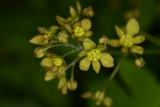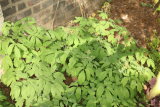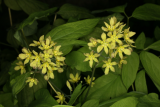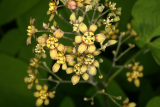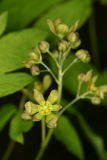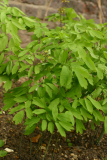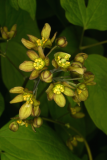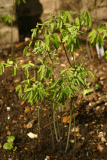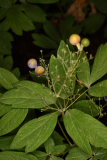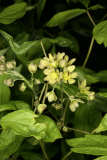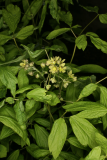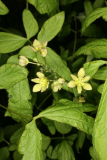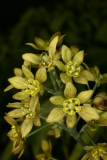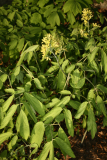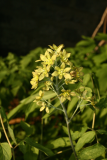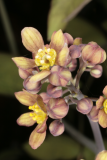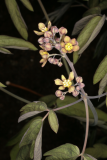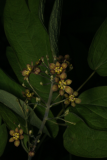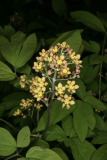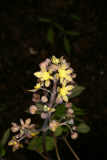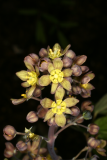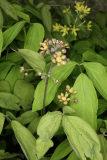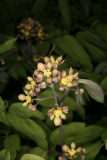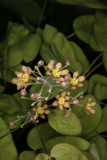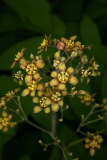Additional notes (click to expand)
Other use
Blue cohosh, also known as squaw root and papoose root, is a North American woodland plant with
fleshy blue, seed-containing berries. Millspaugh reports that it was used by Native Americans to promote labour. Pregnant women took it for a month or two before childbirth. Seventy years ago it was in the British Pharmacopoeia, when extracts from the roots and rhizomes were used as a diuretic. It causes contraction of smooth and voluntary muscle, and may cause chorea-like involuntary movements. It can cause serious myocardial toxicity (heart failure) and strokes in newborn babies whose mothers have taken blue cohosh, as it contains cardiotoxic alkaloids and vasoconstrictor agents. It may cause precipitate labour. Side effects, some serious, are reported in adult women who have taken it to procure abortions. Modern systems of reporting on deaths and side effects have been invaluable in taking dangerous herbal ‘medicines’ out of use, but their control is still far less strict than it is for prescription medicines.
Oakeley, Dr. Henry. (2011). A Year in the Medicinal Garden of the Royal College of Physicians, revised edition. Royal College of Physicians, London. page 21
link
Toxicity
A woodland plant, once popular in herbal medicine, Blue Cohosh, Caulophyllum thalictroides, was widely used to induce labour (and it worked), but medical observations that it caused heart attacks
and death in the mothers and infants, has led to its use being banned, and abandoned by all except the foolhardy and ignorant.
Oakeley, Dr. H.F. (2013). A tour of the Medicinal Garden of the Royal College of Physicians.
Geographical distribution
- Northern America, Eastern Canada
- Northern America, Northeastern U.S.A.
- Northern America, Southeastern U.S.A.
- Northern America, Western Canada
Caulophyllum thalictroides (L.) Michx.
Family: BERBERIDACEAEGenus: Caulophyllum
Species: thalictroides (L.) Michx.
Common names: Blue Cohosh
Distribution summary: Northern America
Habit: Perennial
Hardiness: H5 - Hardy; cold winter
Habitat: Moist, boggy sites by streams, rich soils
Garden status: Currently grown
Garden location: North America (A)
Flowering months: April, May, June
Reason for growing: Medicinal, traditional herbal registration
